Philipston
Houses within 15km of this house
Displaying 68 houses.
Houses within 15km of Philipston
Displaying 68 houses.
| House name | Description | |
|---|---|---|
| Linfield | This house was the residence of Darby O'Grady in 1837 and the early 1850s. He held it from the Lloyd Apjohn family who subsequently lived in it. Sold by the Lloyd Apjohns following the death of Michael Marshall Lloyd Apjohn in 1895. This house was a ruin until recently renovated and is now inhabited. |

|
| Portnard | Located on the Stafford O'Brien estate and occupied by the Reverend Rickard Lloyd in the mid 19th century, when the buildings were valued at £27. Miss Catherine Lloyd was the last Lloyd occupant. The property was sold 1910-1913. |
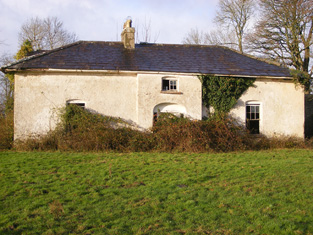
|
| Towerhill | This property was the original residence of the Lloyd family where they settled in the 17th century. It passed to William, second son of Reverend Thomas Lloyd of Towerhill. Occupied by William's son, Reverend Rickard Lloyd, in 1814. The buildings were valued at £31 at the time of Griffith's Valuation when William Lloyd was the occupier. The property was held from the Stafford O'Briens. Purchased by the Devanes at the end of the 19th century, the house is now in ruins. |
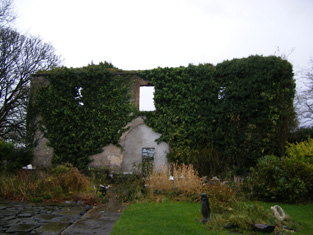
|
| Mountsion | Occupied by Robert Bradshaw in 1814 and by Helenus White in the early 1850s. The buildings were valued at almost £9 and were held in fee. | |
| Mount Catherine | A house on the Lloyd Apjohn estate, the home of the Smithwick family from about the mid 18th century and occupied by Michael Smithwick in the early 1850s, when the house was valued at £24. The Smithwicks of Mount Catherine and the Lloyd Apjohns were related through at least one marriage. |

|
| Sunville | Sun-Ville, Pallas-Green was the residence of Thomas Apjohn at the end of the 18th century and of John Ryan esquire in 1814. In the early 1850s it was occupied by Thomas Kearney and held from Michael Apjohn. The buildings were valued at £33. Thomas Kearney was County Surveyor for the East Riding of county Limerick, 1837-1862 and for Limerick city 1852-1853. His daughter Olivia married in 1854 Michael Marshall Lloyd Apjohn of Linfield. see http://www.dia.ie/architects/view/2903. It is still extant. |

|
| Landscape | The Reverend M. Lloyd Apjohn was the occupier of this house at the time of Griffith's Valuation. He held it in fee and it was valued at £21. The original house is not extant and a modern building has been constructed at the site in this century. | |
| Pallas House | At the time of Griffith's Valuation this house was occupied by Thomas Apjohn who held the property from the Trustees of E. Smith's Charities. The National Inventory of Architectural Heritage suggests it was constructed in the 1790s. The building is still extant. |
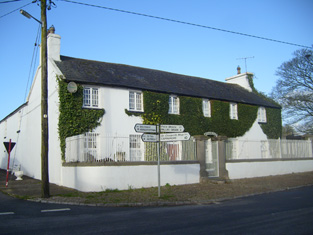
|
| Castle Garde | The seat of Hugh M. O'Grady at the time of Griffith's Valuation, held by him in fee. Powell writes in his list of Jurors that it was built by Hugh's father the Honourable Waller O'Grady circa 1830. Valued at £38 in 1906. It is still extant. |
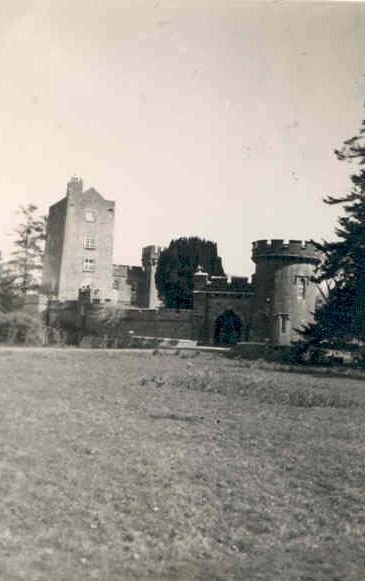
|
| Kilmoylan | The home of Richard White in 1814 and of Newport White in the early 1850s, held from the representatives of D. Barrington. The buildings were valued at almost £18. It is no longer extant. | |
| Toomaline House | The Ordnance Survey Field Name Book refers to the building of this house by the Marshalls in 1829 and that it was the seat of William Bennet in 1839. "It is of a decayed appearance owing to the decease of the proprietor". The home of Mrs Marshall in 1837 and of Lawrence Marshall in the early 1850s, valued at £16 and held from the representatives of D. Barrington. It is still extant and occupied. |

|
| Bilboa Court | Built in the last decade of the 17th century by the Reverend Dean Story. It was later occupied by Colonel Wilson. Lewis refers to Bilboa House as the property of the Earl of Stradbroke. It was "nearly in ruins", was built "wholly of brick from Holland" and was formerly the residence of Colonel Wilson. Circa 1840 the Ordnance Survey Name Book records a three-storey ruin with about 40 windows which had been falling into decay since about the 1770s. |
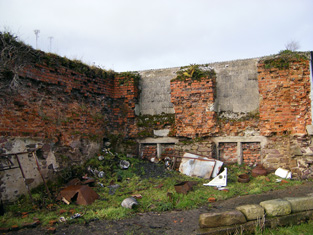
|
| Derk | The home of the Considine family in the 19th and 20th centuries and formerly of the Heffernan family. At the time of Griffith's Valuation the house was valued at £40 and held in fee. Bence Jones writes that this house was sold in 1971. |

|
| Newtown House | In 1786 Wilson refers to Newtown as the seat of Mr. Ellard. Occupied by Miles Ryan in 1814 and by Richard Ellard at the time of Griffith's Valuation. Ellard held the property from - Keating and the buildings were valued at £13. Lewis refers to Newtown Ellard as the ancient seat of the Lloyd family. In 1906 this house valued at £23.10 shillings was occupied by Mary R. Ellard. It is still extant. |
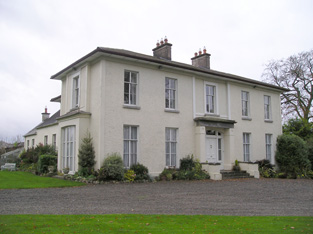
|
| Castle Lloyd | The seat of the Lloyd family in the 19th century, the sale rental of 1855 records that the original lease was from Robert Bradshaw to the Reverend Richard Lloyd, 8 Nov 1760. IN 1786 Wilson refers to Castle Lloyd as the seat of Rev. Mr. Lloyd. It was occupied by the Reverend Michael Foster in 1814 and by Thomas Lloyd in 1837. Although described by Lewis in 1837 as the handsome residence of Thomas Lloyd, the Ordnance Survey Field Name Book states that the house was in a neglected and decayed state in 1840 due to the death of "the Captain this year". By the time of Griffith's Valuation the house was leased to the Guardians of the Tipperary Union who were using it as a Workhouse. The buildings were valued at £44. Castle Lloyd was advertised for sale in November 1881 on 93 acres. It belonged to Patrick Daly who held it under a fee farm grant dated 12 July 1869 from Letitia Anne Bradshaw to William Daly. The Irish Tourist Association Survey of the early 1940s refers to the demolition of this house about 70 years previously and that only the circular tower remained of the extensive 18th century dwelling built by Captain Lloyd. |

|
| Thomastown Castle | The original building was a two storey house of pink brick built in the 1670s by George Mathew with early 18th additions. Wilson decribed it in 1786 as "an ancient but handsome edifice". In the second decade of the 19th century it was enlarged and transformed into a Gothic castle, designed by Richard Morrison for the 2nd Earl of Llandaff. Viscount Chabot is recorded as the occupier in the mid 19th century. He held the property in fee and the buildings were valued at £100. Bence Jones writes that it later was in the possession of the Daly family but from the mid 1870s it began to decay. William Daly was the occupier in 1906 when the buildings were valued at £61. |
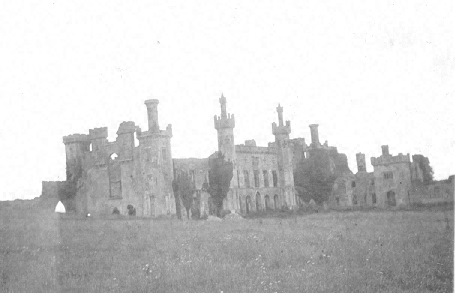
|
| Ballygriffen | Taylor and Skinner record the Earl of Clanwilliam as proprietor of Ballygrifffin, Golden, in the 1770s. In 1786 Wilson refers to two properties owned by the Earl in this area "on the left of Golden is Lisheen, a seat sometimes occupied by the Earl of Clanwiliam, contiguous to which is Ballygrifin, where his lordship has a very fine range of stables and other offices". The house now at Ballygriffin is a mid 19th century house incorporating the remains of a a tower house. Occupied by Edmond [Edward] Dalton in the mid 19th century when the buildings were valued at £16.10 shillings and held from Charles Bianconi. Edward Dalton's son John Edward Dalton of Golden Hills owned 161 acres in the 1870s. |

|
| Lisheen | In 1786 Wilson writes that Lisheen was a seat sometimes occupied by the Earl of Clanwiliam. It became the seat of the Fitzgeralds, Baronets, in the 19th century, valued at £33 in the 1850s and held from the Earl of Portarlington. Edward Dalton was the tenant at the time of the sale of the Earl of Portarlington's estates in June 1856. A building is still located at this site. | |
| Mount Bruis | The Inventory of Irish Architectural Heritage dates this house from the mid 18th century. It was occupied by Doherty Esq in the 1770s and in 1786. The residence of Edmund Scully in 1814, Mrs Doherty in 1837 and Thomas Dwyer in the early 1850s. Dwyer held the property from Irwing Bagnell and the buildings were valued at £25. In 1840 the Ordnance Survey Name Books described it as "a very old building and in middling repair". It is still extant. |

|
| Ballyglass House (Clanwilliam) | Lewis records Mrs Slattery as resident at Ballyglass in 1837. In 1840 The Ordnance Survey Name Books refer to it as a house "in good repair, the residence of John Burke". It is recorded under both Clonpet and Cordangan parishes. By the mid 19th century it was the home of Thomas Mulcahy. The house was valued at £18.10 shillings and was held from Robert Maxwell. Buildings still exist at this location. | |
| Brookville | In 1840, the Ordnance Survey Name Books describe Brookville as "of very large dimensions, in very good repair, the residence of James Sadlier". He still lived at Brookville in the mid 19th century when the house was valued at £30 and held from James H. Smith Barry. This house, located on the south side of Tipperary town, is still a residence. |

|
| Cordangan House | Cordangan was a Cooke family residence in the 18th and 19th centuries, occupied by John Cooke in 1814. The Ordnance Survey Name Books refer to it as being "in very good repair, the residence of J. Cooke". in the early 1850s it was occupied by Thomas Cooke. The property was held from the Smith Barry estate and the buildings were valued at £26. Slater refers to it as the residence of Horatio Townsend in 1894. In 1906 it was in the possession of Lord Barrymore and valued at £53. It is still extant. |

|
| Scalaheen | In 1840 the Ordnance Survey Name Books describe Scalaheen as "a very large house pleasantly situated on a hill, the residence of Richard Sadlier". William Sadlier occupied this house which he held from Nicholas Sadlier at the time of Griffith's Valuation. It was valued at £30. This house, which was located on the outskirts of Tipperary town, no longer exists. | |
| Chadville | A house valued at £11 occupied by William Ryan and held from Hugh B. Bradshaw in the mid 19th century. Later in the nineteenth century it was associated with Valentine Ryan, who held large estates in County Donegal and in Queen's County. This house is still in use as a residence. |

|
| Ballynacree House | A house valued at £10 and held from Samuel Dixon by Michael Manning in the mid 19th century. Ballynacree is still extant. |

|
| Pegsborough House | In 1786 Wilson refers to Pegsborough as a seat of the Earl of Derby. Henry Smithwick was living at Pegsborough in 1814. By 1837 George Bradshaw was resident. The Ordnance Survey Name Books in 1840 refer to this house as the property of Lord Portarlington. In the early 1850s George Bradshaw held the property from Henry Smithwick. The buildings were valued at £23.5 shillings. A house is still extant at the site. | |
| Grantstown Hall | The present house is not marked on the first Ordnance Survey map circa 1840. A house in this townland, valued at £10.10 shillings at the time of Griffith's Valuation, was occupied by Charles Massy who held it from [his brother] Henry W. Massy. In 1894 Slater noted it as the seat of Gen. William Massy. The Massys continue to live at Grantstown until at least 1906. Still extant and occupied. |

|
| Bansha House | Bansha House is marked on the first edition Ordnance Survey Map circa 1840. It was the home of Robert Clarke, fourth son of the Reverend Marshal Clarke, in 1837. John Vincent occupied a house valued at £20 in this townland at the time of Griffith's Valuation. He held it from Richard Butler. The National Inventory of Architectural Heritage dates this house from about 1880. It now functions as a guest house. http://www.tipp.ie/banshahs.htm |

|
| Kilfeakle | A home of the Bunbury family in the mid 18th century and later of the Scully family. James Scully was resident at Kilfeacle in 1814. Mrs Scully, [widow of Denys Scully, son of James], was the occupier in 1837 and her fourth son Thomas was resident at the time of Griffith's Valuation. He held the property from the representatives of B. Bunbury. By the early 20th century Kilfeakle House was in ruins. | |
| Mountwilliam | This house was a Bunbury home in the late 18th century. Wilson refers to Mount-William as the seat of Mr. Bunbury in 1786. Jeremiah Scully was living at Mount-william in 1814. James Mahon was resident in 1837 and Denis Dwyer in the early 1850s. The property was held from the representatives of Benjamin Bunbury and the house was valued at £14. This house no longer exists. | |
| Kilshane/Arraghslea | Kilshane Cottage was occupied by Captain Blackmore in 1837 and noted by the Ordnance Survey Name Books as "the residence of Captain Blackmore, in excellent repair" in 1840. It was occupied by Henry Blackmore in the mid 19th century, when the house was valued at £11 and held from Simon Lowe. The Blackmores were related to the Lowes. This building is named Kilshane on the first edition Ordnance Survey map. Buildings in Kilshane valued at £12 were still in the possession of the Lowe family in 1906. This house later became known as Arraghslea and following a townland boundary change was located in the townland of Springhouse. |

|
| Kilshane/ Spring House | It is not clear where the McCarthy house at Springhouse was located but a building is marked on the first edition Ordnance Survey map as Spring House, later known as Kilshane. In 1786 Wilson refers to Spring House as the seat of Mr. McCathy. Thomas McCarthy resided at Springhouse in 1814. The present house was built in the 1820s by John Lowe and was designed by C. F. Anderson. It continued to be the home of the Lowe family throughout the 19th century. Lewis refers to Spring House the residence of J. Low. Simon Low held the property in fee at the time of Griffith's Valuation when the house was valued at £75. The Lowes were still resident in 1906. This house was renovated and restored in the early 21st century and now functions as a hotel. see http://www.kilshanehouse.ie/Contact.html |

|
| Lacken | John Smithwick was resident at Lacken in 1837 and by George Smithwick in the early 1850s and held from Miss Mary Sadlier. The buildings were valued at £11. A house is still extant at the site. | |
| Ballinaclogh | A house occupied by William Scully and held by him in fee at the time of Griffith's Valuation. The buildings were valued at £11. William Scully (born 1821) of Ballinaclough was the fifth son of Denys Scully of Kilfeakle. He owned 1,354 acres in county Tipperary in the 1870s. Occupied by T.A. Scully in 1906 and valued at £16. | |
| Castlepark House/ Mantle Hill | In 1786 Wilson refers to the seat of Mr. Alleyn on the left at the entrance to Golden. He may be referring to the early house at this site, shown as Castlepark House on the first edition Ordnance Survey map. By the early nineteenth century it was the home of the Creagh family. Richard Creagh was resident in 1814 and 1837 and Lawrence Creagh held the property from Kingsmill Pennefather at the time of Griffith's Valuation. The buildings were valued at £65. Later bought by the Scullys, when it became known as Mantle Hill. Occupied by Vincent Scully in 1906. The house is no longer extant. |
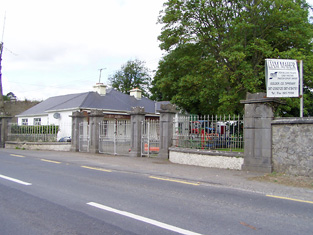
|
| Golden Hills | Leet records Henry White as the proprietor of Goldenville, Golden, in 1814. In 1837 Lewis refers to Golden Hills as the "castellated residence of H. White". Edmond [Edward] Dalton occupied this house in the early 1850s holding it from Henry White. It was valued at £25. By 1858 Thomas Judkin Fitzgerald was occupying Golden Hills or Golden Lodge which was advertised for sale in January 1858 and again in April 1878. In 1878 Golden Hills was described as a "large castellated building" with a drawing room opening into a conservatory, dining room and morning room, 8 bedrooms and a servants' hall. The Irish Tourist Association surveyor records that it was the residence of Thomas Judkin Fitzgerald, High Sheriff of county Tipperary in 1798, known as "Flogging Fitzgerald". In the early 1940s most of the house had disappeared or was incorporated into a modern farmyard. |

|
| Spring Mount | J. White was living at Spring Mount in 1837 and at the time of Griffith's Valuation Robert W. White was the occupier, holding the property from William Scully. The house was valued at £17. The Whites were still occupying Spring Mount in the 1870s. |

|
| Athassel | James Scully was occupying this house at the time of Griffith's Valuation. He held it from Richard Creagh and the buildings were valued at £30. This house is still a residence. |
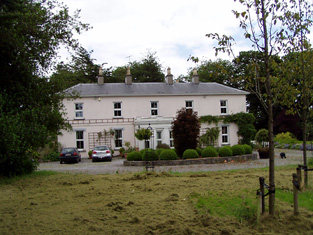
|
| Rathcloheen | Rathcloheen was the home of John Mathew in the first half of the 19th century. The house is situated very close to Thomastown Castle. At the time of Griffith's Valuation John Mathew held Rathcloheen from Lynn Carew and the buildings were valued at £20. "Burke's Irish Family Records" refers to John Smithwick of Rathclogheen, county Tipperary who married Cherry Pennefather in 1823. This house is well preserved and is still used as a residence. |

|
| Ballinard | This house was the seat of the Chadwick family in the 18th and 19th centuries. The present house dates from the early 19th century and incorporates parts of an older building. John Chadwick was resident in 1814 and William Chadwick in 1837. In 1840 the Ordnance Survey Name Books note it as the seat of Ostin [Austin] Sadlier and describe the house as "a very large building in good repair". At the time of Griffith's Valuation. the house was valued at £33 and held from the Earl of Portarlington. The Chadwicks were still living at Ballinard at the beginning of the 20th century. |

|
| Damerville | Austin Cooper Chadwick, third son of John C. Chadwick, lived at Damerville in the 1830s. In 1840 the Ordnance Survey Name Books describe it as "a modern structure in good repair". By the time of Griffith's Valuation [his widow] Mrs Anne Chadwick was resident. The house was valued at £10 and held from the Earl of Portarlington. It is still extant. |

|
| Shrone Hill | Shrone Hill or Shronell House is a mid 18th century house. In 1786 Wilson describes it as "once a magnificent building of the late Mr. Damer, now belonging to Lord Milton and in ruins". It was occupied by the Sadlier family in the 18th and 19th centuries. The Ordnance Survey Name Books refer to it as the residence of William Sadlier in 1840. At the time of Griffith's Valution the house was valued at £20 and leased by Clement Sadlier from the Earl of Portarlington. It is still extant. |

|
| Damer's Court | In 1837 Lewis refers to this house as follows "built about a century ago by John Damer, passed to the Earl of Dorchester and then to Lady Caroline Damer his daughter and sole heir and is now the property of the Earl of Portarlington. The mansion was taken down in 1776". It is marked on Taylor and Skinner's map. In 1786 Wilson refers to it as "the very noble and beautiful seat of Lord Milton", On the 1st edition Ordnance Survey map it is labelled "Damerville Court [in ruins]". There is no trace of this house now. | |
| Ballykisteen House | Described by Lewis in 1837 as an "elegant modern building" situated on the Limerick road. The Ordnance Survey Name Books of 1840 refer to it as "the residence of Lord Stanley, pleasantly situated on rising ground and in good repair". In the early 1850s the house was valued at £50 and held in fee by Lord Stanley. It was later one of the homes of the O'Connor family. The original house no longer exists. Ballykisteen hotel and golfcourse are now located near the site. |

|
| Russelstown | At the time of Griffith's Valuation John Hewston occupied Russelstown House, valued at £20, and held from Lord Stanley. |

|
| Greenane | The Manserghs were residing at Greenane from the mid 18th century. Wilson, writing in 1786, refers to the house as the seat of Nicholas S Mansergh. In 1814 John Mansergh was the occupant and in 1837 it was the home of his son, Richard Southcote Mansergh. In the mid 19th century the house was valued at £35 and held from Lady Osborne. In 1894 Slater refers to it as the seat of Lt. Col. M. Tynte. The house is still occupied by a member of the Mansergh family, Philippa Mansergh, and her husband, John Wallace. |

|
| Roesborough | Occupied in the 1770s by Sadler Esq. In 1786 Wilson states that it was the seat of James Roe. Occupied in 1814 and 1837 by James Roe and in the early 1850s by his son George who held the property in fee. The house was valued at £32.15 shillings. The representatives of Richard Sadlier were the tenants of Roesborough in 1873. This house is now a ruin. |

|
| Kingswell House/Sadleirswells | Kingswell was a Lovett property in the 18th and early 19th century.The home of a branch of the Sadlier family in the 19th century, labelled on the 1st edition Ordnance Survey map as Sadleirswells House and on the later 25-inch edition as Kingswell House. In 1840 the Ordnance Survey Name Books record that they were seeking the opinion of the then owner William Sadlier as to the name under which the house should appear. Occupied by Richard Sadlier in 1814, by W. Sadlier in 1837 and held by Richard Sadlier in fee at the time of Griffith's Valuation, when the house was valued at £35. Home of a branch of the Massy family in the second half of the 19th century. The sale rental of January 1854 shows that the house was leased to John Massy on 23 January 1852 by Robert W. R. Sadleir for the life of John Massy or 31 years. This house is now demolished although yard buildings and garden follies remain in existence. |

|
| Dundrum | Dundrum was the seat of the Viscounts Hawarden in county Tipperary in the 18th and 19th centuries. The Ordnance Survey Name Books mention that the demesne was well-planted in 1840. Dundrum was held in fee by Viscount Hawarden and valued at £85 at the time of Griffith's Valuation. The Earl de Montalt was still resident in 1906 when the house was valued at £85. The Irish Tourist Association Survey states that it was bought from the Land Commission in 1908 and became St Michael's Presentation Convent. This early 18th century Palladian house now functions as a hotel located in the grounds of the Tipperary golf club. |

|
| Lackenacoombe | Samuel Cooper held this house in fee at the time of Griffith's Valuation. It was valued at £7.5 shillings. Some buildings remain at this site. | |
| Kilmore | The National Inventory of Architectural Heritage dates this house from the early to mid 18th century and the Wayland family were resident at this time. Austin Cooper was living at Kilmore in 1837 and at the time of Griffith's Valuation Samuel Cooper was the occupier. He held Kilmore from the Earl of Normanstown and the buildings were valued at £16. This house is still occupied and part of a working farm. |

|
| Killenure Castle | Leet records Samuel Cooper as the proprietor of Killenure in 1814 and Lewis in 1837 as the "seat of William Cooper". At the time of Griffith's Valuation William Cooper held the property in fee and the house was valued at £31.10 shillings. The Coopers were still resident at Killenure in the early 20th century. As its webiste suggests "It has been a fortified home with sturdy towers, a'hunting box', a country house for a large family, a busy productive farm with stables and coach house, a boarding school and even a meditation centre". It will be open to the public from Summer 2012. See htp://killenure.com. |
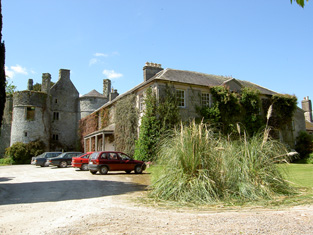
|
| Ballywalter | F. V. Wayland was resident at Ballywalter in 1837. Francis Wayland of Ballywalter was murdered in 1838 on his way to a fair. William Weyland was living at Ballywalter in the mid 19th century, when the house was held from William Cooper and valued at £12.5 shillings. The Waylands and Coopers were related. This 18th century house is still in use as a family residence. |
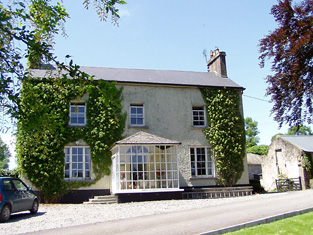
|
| Marlow | An early 18th century house, the seat of a branch of the Pennefather family, with some early 20th century additions. Still extant, this house was the residence of Thomas Pennefather in 1814 and Edward Pennefather in the mid 19th century. He held the property in fee and the buildings were valued at £14. The Pennefathers were still resident at Marlow in the mid 20th century. |

|
| Grene Park | This house dates from the mid 19th century and appears to have been built [for Nicholas B. Grene] post the first edition Ordnance survey map as it is not located on exactly the same site as the previous building. Griffith's Valuation records Nicholas B. Greene occupying a house valued at £29.15 shillings, held from the representatives of Robert Usher. This house still functions as a residence. |

|
| Ballymore House | The Murphys were established at Ballymore from the early 18th century. A castle and two houses are located in this townland at the time of Griffith's Valuation, all inhabited by members of the Murphy family. The main residence was Ballymore House, which was occupied by Edmond W. Murphy. He held the house and 423 acres from the Earl of Norbury. The buildings were valued at £24.5 shillings. Daniel Murphy also occupied a house valued at £12.5 shillings (Grid Ref S021 457). Ballymore House is still a family residence. |
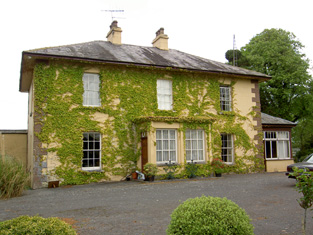
|
| Cappamurragh | The Grene family home occupied by John Grene in the first half of the 19th century. He held the property in fee and the buildings were valued at £24 in the early 1850s. In 1841 the Ordnance Survey Name Books describe it as "a gentleman's seat in a very handsome demesne of considerable extent". It is still extant. |

|
| Greenfield | Colonel W. Purefoy was resident at Greenfield in 1837. The Ordnance Survey Name Books refer to Greenfield as "a house in a small but well wooded demesne". By the early 1850s Edward Bagwell was the occupier. He held the property in fee and the house was valued at £27.15 shillings. Wilfred B. Purefoy occupied Greenfield in 1906 when it was valued at £38. 10 shillings. It is still extant. |
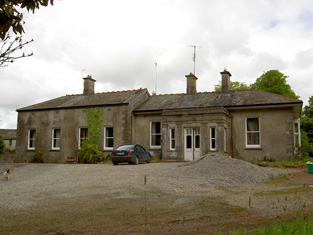
|
| High Park | The Reverend John Hunt was resident at High Park in 1814 and in 1837. By the time of Griffith's Valuation his son Vere Hunt was the occupier. The property was held from Richard Beere and the buildings were valued at £15. High Park is still extant and, in 2012, was offered for sale. |

|
| Cappagh House | Vere Hunt was living at Cappa in 1814 and Mrs [Fitzmaurice] Hunt in 1837. Arthur Hewlett was the occupier in the mid 19th century holding the property from De Vere Hunt. The buildings were valued at £26.25 shillings. Godfrey Massy Hunt of the Friarstown family was resident in the later 19th century. This house belonged to Mr Griserood in the early 1940s. A house is still extant at this location. | |
| Rathneaveen | No house is named on the first edition Ordnance Survey map for this townland, however later maps show Rathneaveen House. It was built in the mid 19th century as Michael Ryan occupied a house valued at £10.15 shillings in this townland at the time of Griffith's Valuation. Michael Ryan of Rathneaveen is recorded in the 1870s and the house is still extant. | |
| Cluen House | An 18th century house originally known as Mount Kennedy. This house valued at £15 was being used as an auxiliary workhouse in the mid 19th century. It was held by John Kennedy from Thomas Slattery. In 1906 Lord Barrymore is recorded as the occupier and the building were valued at £28+. |

|
| Friarsfield | A house built circa 1870 for the Manserghs and shown on the 25-inch Ordnance Survey map of the 1890s. It is now occupied by Dr Martin Mansergh and family. In 1840 the Ordnance Survey Name Books refer to another house in this townland, occupied by James Southcote Mansergh and known as Newtown Cottage [R906377]. At the time of Griffith's Valuation, a property in this townland owned by Southcote Mansergh and valued at £40 was in use as an auxiliary workhouse. |

|
| Castle View | A house valued at £10 was occupied by Edmond Dalton in the mid 19th century. It was held from Colonel William Dickson. A building is marked on the first edition Ordnance Survey map at this location. A larger building on later maps is named Castle View. Buildings are still extant at the site. | |
| Cahervillahowe | A house built post Griffith's Valuation by the Massy family. Cahervillahowe was sold to Mr Harris in the early 20th century. It is now a stud. |

|
| Springfield House (Tipperary) | In 1786 Wilson refers to Springfield as the seat of Mr. English. By the time of Griffith's Valuation, the townland was part of the Smith-Barry estate and the house was valued at almost £4. It was occupied by Nicholas Sadlier at the time. A subtantial farm occupies the site now. | |
| Sandymount (Cordangan) | In 1840 the Ordnance Survey Name Books refer to Sandymount House "in good repair", part of the estate of James Sadlier. By the time of Griffith's Valuation, it was being leased by F.J. Mansergh from the Smith-Barry estate and valued at £7 5s. Buildings are still extant at the site. | |
| Ballynilard Cottage | In 1840 the Ordnance Survey Name Books refer to Ballynilard Cottage as the residence of Robert Smithwick, "pleasantly situated and in good repair". At the time of Griffith's Valuation, the townland was part of the Smith-Barry estate. Robert Smithwick was leasing a house valued almost £10 while William Evans, MD, was leasing another house in the townland valued at £10 5s. Ballynilard Cottage is labelled Cottage on the later 25-inch map of the 1890s and a house still exists at that location. |

